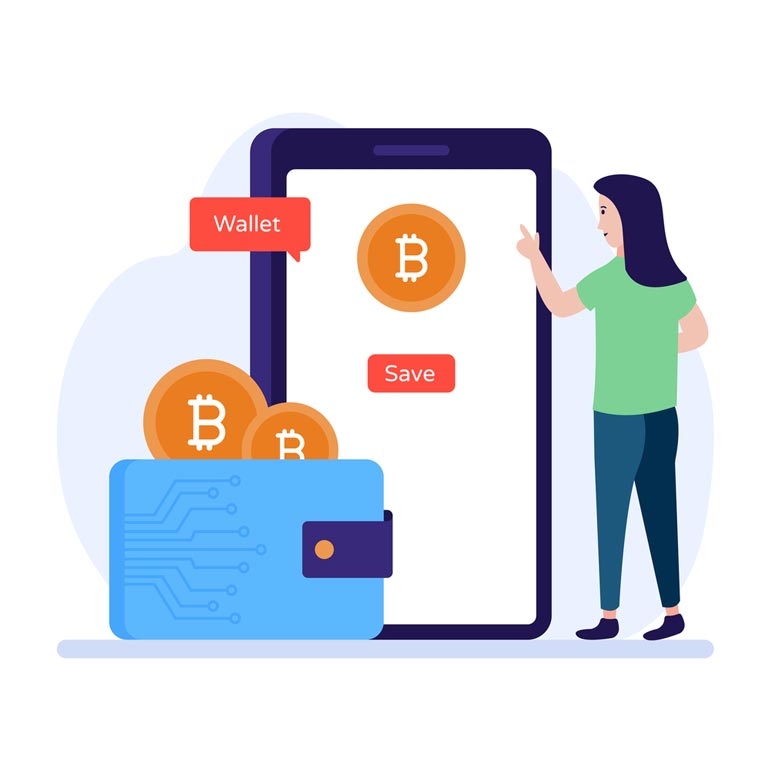Start 14-Day Trial Subscription
*No credit card required

How to Choose a Crypto Payment Gateway?
Discover how integrating crypto payments can revolutionize your small business. Explore the benefits, from lower transaction fees to enhanced security measures. Learn how to choose the right crypto payment gateway, considering factors like processing speed, scalability and user-friendly interfaces.
For small businesses, payments in crypto are a necessity with clear and noticeable benefits. To attract as many clients and customers as possible, companies need to provide all kinds of payment methods and lower the cost of transactions.
In this article, we’ll delve deep into how to choose a crypto payment gateway and the features it needs to have. Before choosing a gateway, a business should be roughly aware of the scope of the crypto transactions they plan to have as well as how tech-savvy their customers and users are.
Transaction Fees
Generally, cryptocurrency transaction fees are much lower than those paid to transfer traditional currency. However, there are still some fees to cover. The amount usually depends on the amount you’re transferring and the features that the crypto payment gateway includes beyond the ability to transfer.
For a business installing the gateway, it also helps to know how large an average sum they are transferring will be. The fees cut into profits, and for those transferring small sums, they are a challenge to the bottom line.
Processing Speed
Blockchain technology is famous for the speed with which it transfers data and funds. However, there are differences between gateways a business should look into when choosing a provider. The wait for the funds to be deposited and available is always just a few seconds, but those seconds can mean a lot compared to competitors.
At the same time, fast payments may also require a business to provide additional features. For instance, lots of slots casinos need to implement responsible wagering practices, as the players can now add more funds, and therefore, many end up chasing previous losses.
What Security Measures Are You Getting?
A key feature of a good payment gateway is its security package. It needs to prevent both parties from malicious threats. This includes preventing malware and other hacking attempts but also making sure that there are no accidental transfers. The easiest way to do that is to require a two-step authentication to make a transfer.
The security features also need to be updated on a regular basis. It is important to determine how often the updates are made and how they’ll affect the service. Frequent updates are good, but it may be an issue if you can’t provide your service during the updates.
The Ability to Scale
This is a feature many businesses don’t think about on time, and it’s essential. It may increase your costs in the long run. A payment gateway should be scalable to accept more users and larger payments as your business grows and there are more customers.
Businesses can grow fast, and not being able to process payments may hurt your image in the long run. It’s difficult to predict how many new customers you can or should expect, but the best way to go is to work as if you’ll increase your business ten times within a year.
Know The Law
Know Your Customer laws are legal measures put in place to prevent money laundering. They require the user to provide their real name in order to register for a service. The users usually provide a photo ID as proof of their identity. Businesses that allow crypto payments may want to opt out of this feature and enable their customers to make purchases anonymously (unless it’s a legal requirement).
The goal should be for the customers to have a hassle-free experience and make payments without having to jump through any hoops. Paying with just an email should be the norm, with the ability to include other safety measures when needed.
How Easy to Integrate
A payment gateway for crypto payments should be simple enough to integrate with the other payment methods a business is providing. Existing systems usually cover fiat payments made with debit cards and bank accounts.
The interface should, therefore, allow the user to choose between these and crypto payments easily. Sometimes, a back-end for crypto payments needs to be separate, but a preferable way of integrating crypto payments is to easily add it to your existing way of work.
Functionality and Features
Merchants need to evaluate the additional features a payment gateway may offer. These can improve the experience for the user and for the business as well. Not all businesses need the extra features, so it’s important to consider how you plan to use the service and how your needs may change and grow in the future.
The most common additional features include:
- Invoicing feature: creating and saving an invoice for both the business and the customer.
- Volatility protections, made to protect the user data when making payments
- Setting up recurring payments for subscriptions
- Reporting and analytics and producing reviews on a regular basis.
Cryptocurrency Support
There are a few cryptocurrencies that have been dominating the markets ever since cryptos were first introduced. Bitcoin and Ethereum are the two biggest and most widely used currencies, with dozens competing for the third spot. There are also almost countless small altcoins that have a niche following and a dedicated base of users.
Most crypto payment gateways provide users with an opportunity to use a variety of different currencies. A business benefits from providing its customers with options as it broadens its potential user base. However, it’s also a matter of choice where to set the limit and which altcoin is too small.
User-Friendly Interface
A forward-facing interface needs to be user-friendly so that any user can easily make a payment, regardless of how tech-savvy they are. The interface should also be intuitive and use color and button placement that allows those not speaking the languages available to make payments as well.
It’s equally important for the interface to have these features when used on a mobile and a desktop device. Users are increasingly moving to mobile devices when shopping online, and businesses need to accommodate them.
Dashboard
A dashboard is an analytics tool available on the back end of a crypto payment gateway. These analytics provide valuable insight into who’s using the payment system, how they are using it, and what amounts are being transferred. A good dashboard should represent data using visualization tools such as graphs and charts.
The dashboard also needs to be user-friendly, given that most online business owners don’t have much experience dealing with statistics and complex data sets. It’s equally important for the users to take advantage of this tool and make it a point to check and review the data they are getting routinely.
Conclusion
Choosing a crypto payment gateway is an important business decision for an online company. It allows customers and users to make online payments using a variety of cryptocurrencies and, therefore, broadens the potential customer base. When choosing which payment gateway to use, businesses should consider the security feature and which cryptocurrencies their user plans to pay with.
A good payment gateway is also easy to integrate and scale up. It’s equally essential for the payment system to have a user-friendly interface and provide the business with an overview of data, allowing it to track and plan for future payments.



